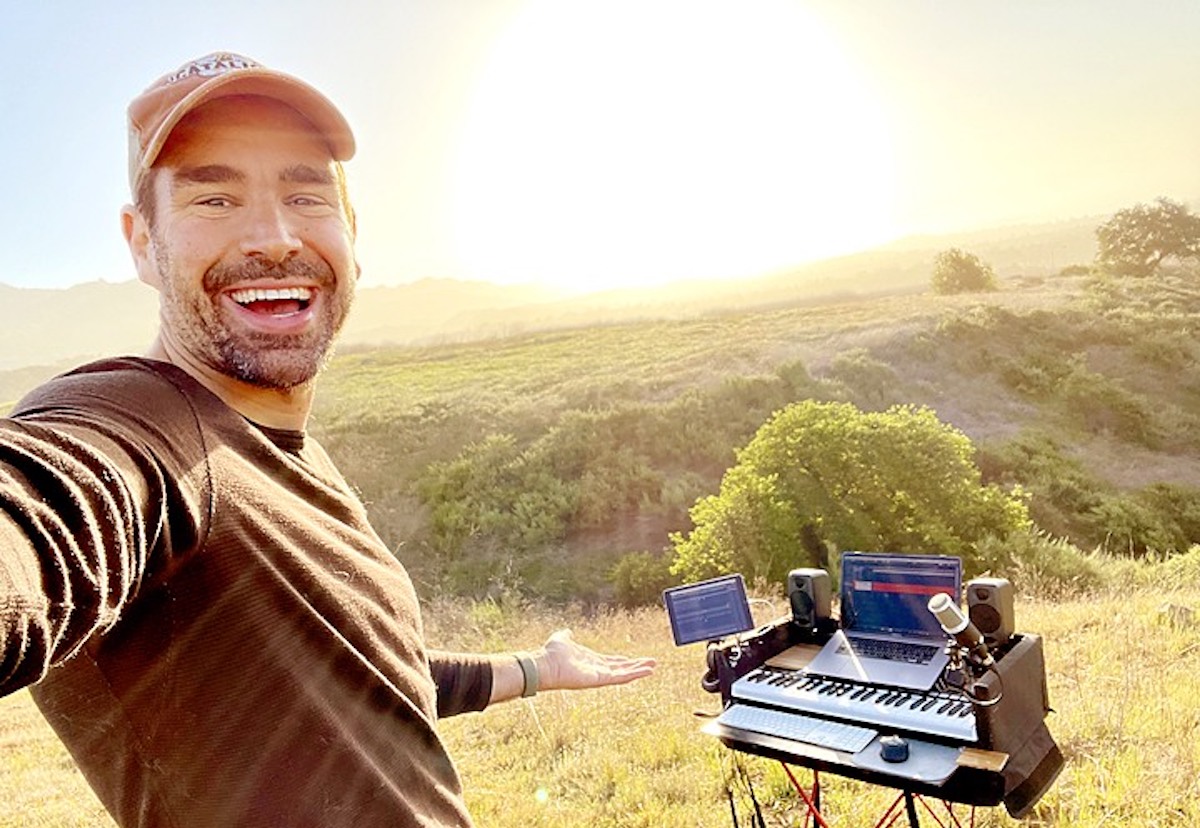Locavore Symphonia, at Santa Barbara’s Granada Theatre
Santa Barbara Symphony Program Features World Premiere Work, with Chumash and Local Nature Ties

Moving into the second installment of its current season, the Santa Barbara Symphony segues from the multi-sensory spectacular of last month’s Carmina Burana season-opening splash to a calmer demeanor this weekend (November 19-20). Maestro Nir Kabaretti leads us into the staple fare of Schumann’s Piano Concerto in A minor — with regular Santa Barbara visitor Alessandro Bax at the piano — and the staple repertoire entries of Mozart’s Symphony No. 40 and Jean Sibelius’ Valse Triste.
This weekend’s most intriguing feature, however, is locavore by nature, on more than one front. The spotlight will be directed on the world premiere of Wisdom of the Sky, Water, Earth, by Cody Westheimer, who grew up in Goleta and played in the Symphony’s Youth Symphony and heard the orchestra play his first orchestral work, aged 17. He then headed to Los Angeles and established a bold career as composer for film, television and such other multimedia projects as nature documentaries, a specialty of his.
Westheimer has moved back to Santa Barbara and, thanks to advances in long-distance work technology, has established the New West studio here with his wife, Julia Marie Newmann. Like many film composers, going back to the birth of sound cinema, Westheimer is eager to pursue more music-based projects and “concert music” ops. For his commission from the Santa Barbara Symphony, the composer sought to incorporate the cultural legacy of this area’s indigenous Chumash people, along with the elements alluded to in this title, with a video component attached.
We connected with Westheimer to get the bigger picture of his soon-to-born brainchild.
You spoke at the Symphony season preview at the Lobero and talked about it still being in a gestation stage. Will this be one of those ink-still-wet premieres, worked on up to the deadline?
With any premiere, the ink always will feel wet, I think. Deadlines force us to commit, but I’ll always be second-guessing things like “Should I have doubled that line with clarinet?” Once I knew what I was doing and was confident, it almost felt like the piece wrote itself at times.
Can you explain how the Chumash and nature elements entered the creative process for you?
I met [Chumash natives] Marianne [Parra] and Ernestine [Ygnacio-DeSoto] while fighting to save the West Mesa of the San Marcos Foothills from development in 2021. The plight of the land was something that resonated strongly with me. My late father and I were deeply involved in the fight to save Ellwood in the 1990s. I lent my services as a short-form filmmaker and made a series of videos — one actually incorporating string orchestra, in a way a precursor to this new piece.
Nir and I have talked about doing a nature-themed original piece for awhile and Nir mentioned the idea of honoring the Chumash. I called Marianne and Ernestine and asked them if they’d be interested in collaborating. They are presenting the piece, and are essentially “soloists” in the orchestra.
Can you offer a short list of composers who had a strong impact and influence on you, and this piece?
I absolutely love the music of Toru Takemitsu. His music is a bit esoteric to some, but lyrical at the same time. It would take somebody who really knows his music to hear it in this piece, as “Wisdom” is a bit more consonant. I’m deeply influenced by Samuel Barber, Aaron Copland. And a shout out to Toshiro Yoshimatsu, Arvo Part, and, of course, my hero in high school — and still now — John Williams.
Has technology enabled the prospect of scoring remotely — as in Santa Barbara, say — more than ever before?
Technology is a huge part of the process these days. It’s why I created my “studio backpack” and my little pet project “Free Range Composing.” The truth is that we as composers have always been remote. My wife Julia and I have his/hers studios here in Santa Barbara, but also when we were in L.A., there were clients across town that we’d email clips to.
I can’t imagine not living here now that I’ve been back for a few years. I’m still honeymooning with the Santa Barbara life.
Support the Santa Barbara Independent through a long-term or a single contribution.



